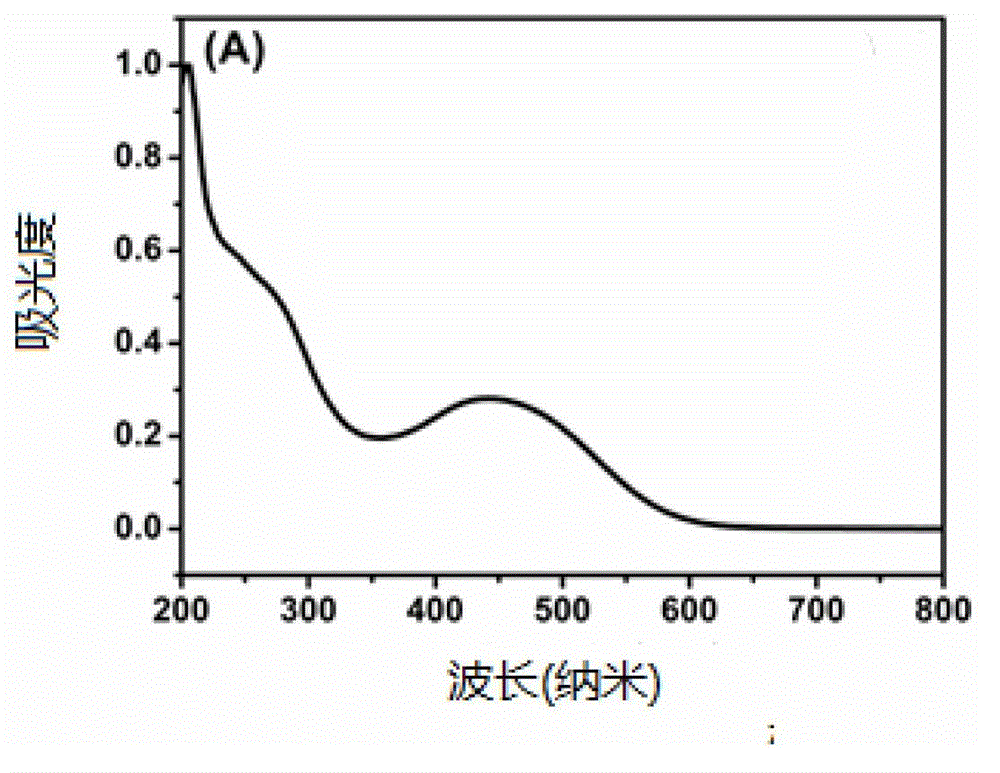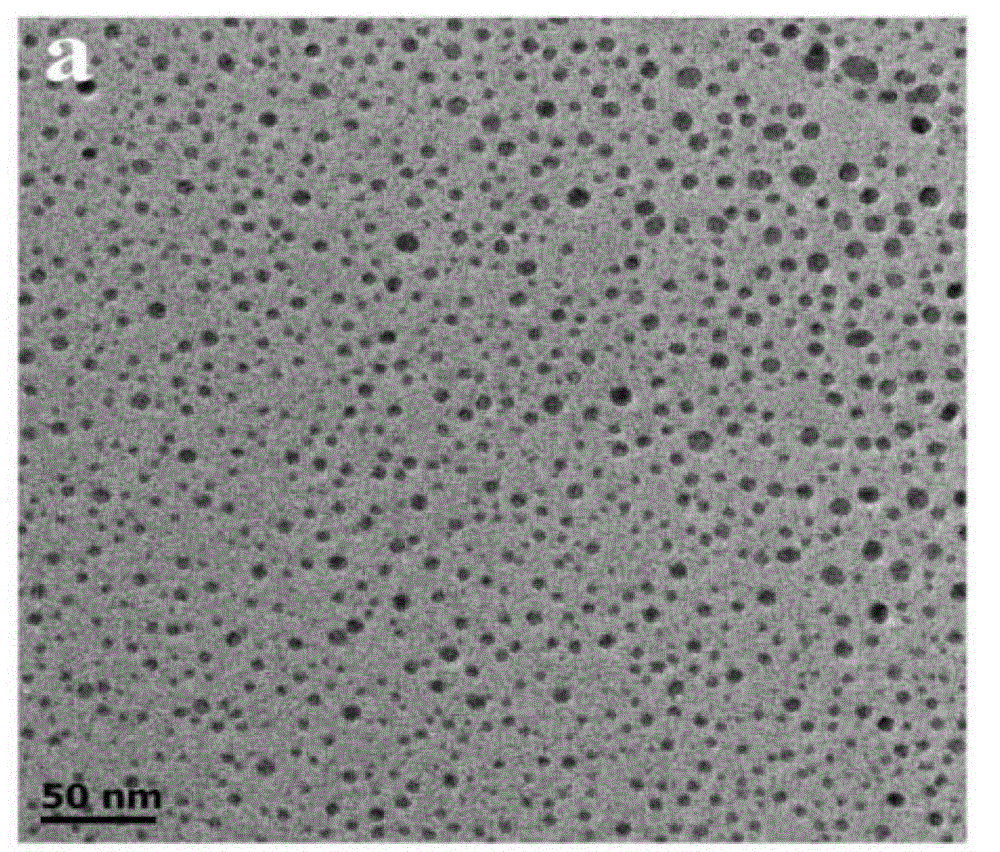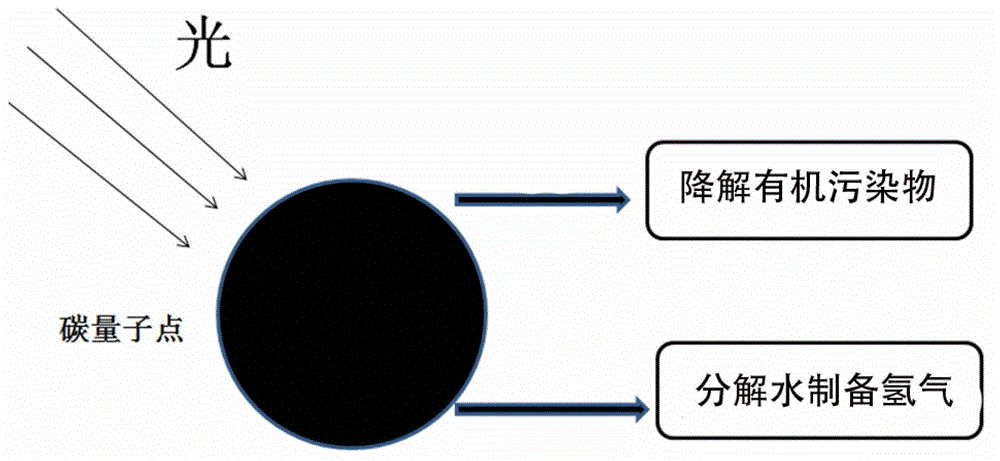Application of heteroatoms doped aqueous carbon quantum dot in photocatalyst
A technology of carbon quantum dots and photocatalysts, which is applied in the application field of heteroatom-doped water-soluble carbon quantum dots on photocatalysts
- Summary
- Abstract
- Description
- Claims
- Application Information
AI Technical Summary
Problems solved by technology
Method used
Image
Examples
Embodiment 1
[0040] A method for preparing water-soluble carbon quantum dots doped with N and P diatoms, including the following steps:
[0041] Put 10mg of polymer PPV1 solid powder into a beaker, add 40mL of 0.5M hydrochloric acid aqueous solution, and mix well; transfer the uniformly mixed reaction solution into a hydrothermal reactor, the reaction temperature is controlled at 250℃, the reaction time is 12 hours, after cooling After separation and purification, the water-soluble carbon quantum dots doped with N and P diatoms are obtained.
[0042] Application of the above-mentioned water-soluble carbon quantum dots doped with N and P diatoms as a new type of photocatalyst in the degradation of organic pollutants in the environment: 100 mg of water-soluble carbon quantum dots doped with N and P diatoms are diffused to 100 mL with a concentration of 10 -5 In the Rhodamine B aqueous solution of M, then transfer the mixed solution to a hermetically sealed quartz container with a condenser, stir f...
Embodiment 2
[0046] A method for preparing water-soluble carbon quantum dots doped with S and N diatoms, including the following steps:
[0047] Put 10mg of polymer PT1 solid powder into a beaker, add 40mL of 5M sulfuric acid aqueous solution, mix well; transfer the uniformly mixed reaction solution into a microwave reactor, control the reaction temperature at 150℃, reaction time 12 hours, and separate and purify after cooling , The water-soluble carbon quantum dots doped with S and N diatoms are obtained.
[0048] (Absorption spectrum such as figure 1 , The TEM image of carbon quantum dots is as figure 2 )
[0049] The application of the above-mentioned water-soluble carbon quantum dots doped with S and N diatoms as a new type of photocatalyst in the degradation of organic pollutants in the environment: 100 mg of water-soluble carbon quantum dots doped with S and N diatoms are diffused to 100 mL with a concentration of 10 -5 In the Rhodamine B aqueous solution of M, then transfer the mixed solu...
Embodiment 3
[0053] A method for preparing water-soluble carbon quantum dots doped with Se and N diatoms, including the following steps:
[0054] Put 5mg of polymer PT2 solid powder into a beaker, add 40mL of 1M potassium hydroxide aqueous solution, mix well; transfer the uniformly mixed reaction solution into an ultrasonic reactor, control the reaction temperature at 250℃, the reaction time is 36 hours, after cooling After separation and purification, water-soluble carbon quantum dots doped with Se and N diatoms are obtained.
[0055] Application of the above-mentioned water-soluble carbon quantum dots doped with Se and N diatoms as a new type of photocatalyst in the degradation of organic pollutants in the environment: 100 mg of Se, N diatomic doped water-soluble carbon quantum dots are diffused to a concentration of 10 -5 In the Rhodamine B aqueous solution of M, then transfer the mixed solution to a hermetically sealed quartz container with a condenser, stir for 2 hours, and irradiate with a...
PUM
 Login to View More
Login to View More Abstract
Description
Claims
Application Information
 Login to View More
Login to View More - R&D
- Intellectual Property
- Life Sciences
- Materials
- Tech Scout
- Unparalleled Data Quality
- Higher Quality Content
- 60% Fewer Hallucinations
Browse by: Latest US Patents, China's latest patents, Technical Efficacy Thesaurus, Application Domain, Technology Topic, Popular Technical Reports.
© 2025 PatSnap. All rights reserved.Legal|Privacy policy|Modern Slavery Act Transparency Statement|Sitemap|About US| Contact US: help@patsnap.com



